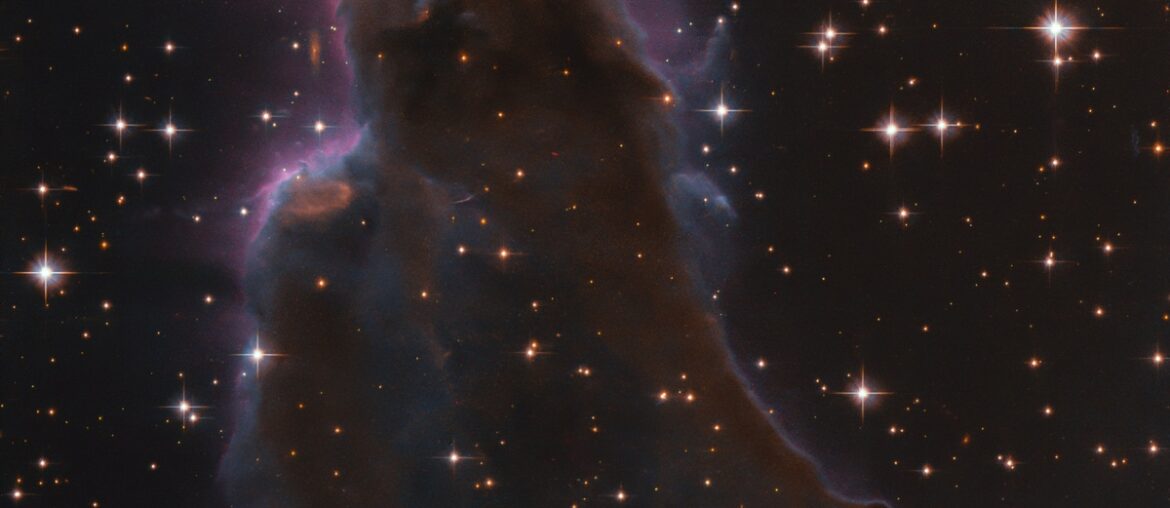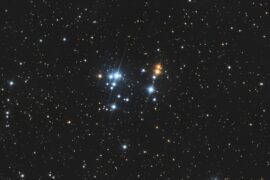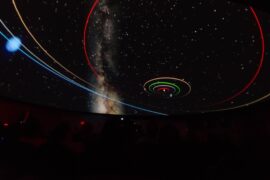The Milky Way contains roughly 100–400 billion stars, and every one of them has a life story that shapes galaxies and the elements around us. Right away, that raises a big question about how stars are born and die—because those life stories set the stage for planets, the chemistry of life, and the structure of galaxies. Star formation is the starting point: cold gas turns into hot, shining cores, and the details of that process affect everything that follows (How stars form: a beginner’s guide).
Understanding how stars are born and die reveals the physical processes that build planets, forge the chemical elements in our bodies, and shape the visible universe. This piece promises a clear, numbered tour of 10 distinct ways stars begin, live, and end, grouped into three big categories: birth processes, evolutionary paths, and death scenarios. The aim is practical: describe the mechanisms, give numbers and examples, and show why each stage matters.
From Clouds to Protostars: Birth processes
1. Molecular-cloud collapse (Jeans instability)
Dense pockets inside cold molecular clouds collapse under their own gravity to form protostars. When a region’s self-gravity overcomes internal pressure—what astronomers call the Jeans instability—the collapse begins. Typical dense cores have temperatures of roughly 10–30 K, sizes near 0.1 parsec, and masses from ~0.1 to 10 M☉.
For a solar-mass core the collapse from a prestellar core to a protostar takes about 10^5 years. Observations from missions like Herschel have shown many cold cores in nearby clouds, supporting this timescale. Barnard 68 is a classic nearby example of a dense, nearly spherical core that has been studied in detail.
This process is a cornerstone of how stars are born and die because it sets the initial mass function—the distribution of stellar masses that determines how many low-mass versus high-mass stars will live and die in a region. For technical overviews, see textbooks like Carroll & Ostlie or review articles in Annual Review of Astronomy and Astrophysics.
2. Triggered star formation (shock waves and compression)
External pressure can nudge marginally stable gas into collapse. Common triggers include nearby supernova shock waves, expanding H II regions around massive stars, and direct cloud–cloud collisions. A supernova blast can travel at hundreds of km/s and compress gas on timescales of 10^4–10^5 years.
The Orion Molecular Cloud Complex illustrates triggered, clustered formation; the Orion Nebula (M42) contains young clusters formed in swept-up, compressed gas. In other regions, expanding H II bubbles carve shells that collapse into new stars. Triggered events often produce bursts of star formation and tightly coeval clusters, which changes the stellar demographics in a cloud.
Triggered formation matters because it can concentrate massive-star birth and shape feedback cycles—new massive stars then produce their own winds and H II regions, continuing the chain of compression and collapse.
3. Disk accretion and bipolar jets (building the star)
Most protostars grow by accreting gas through a rotating circumstellar disk. Those disks typically span from a few tens to a few hundred astronomical units. For T Tauri stars, measured accretion rates are around 10^-8 to 10^-7 M☉ per year.
Angular momentum must be shed as gas spirals inward, and nature uses bipolar jets to do that. Herbig–Haro objects and long, collimated jets are visible signs of this process. ALMA’s striking image of HL Tauri showed rings and gaps in a protoplanetary disk, demonstrating both accretion physics and the initial stages of planet formation.
Accretion-disk physics sets a star’s spin, feeds its mass, and seeds planetary systems. Infrared excesses, mm-wave imaging, and optical jets provide observational fingerprints of these early growth stages.
4. Fragmentation and multiple-star formation
Molecular-cloud cores frequently fragment into two or more pieces, producing binary and multiple-star systems. Observational surveys show that roughly half or more of Sun-like stars are in binary or multiple systems, with multiplicity rising for higher masses.
Turbulence, rotation, magnetic fields, and initial density structure determine how many fragments form and how they separate. Fragmentation influences protoplanetary disks, orbital dynamics, and later stellar interactions like mass transfer or mergers.
Sirius A and B are a well-known bright binary example. Young clusters show high multiplicity fractions, indicating fragmentation is a common outcome of collapse rather than a rare exception.
Paths Through Life: How Stars Evolve
5. Main-sequence hydrogen fusion (stable life)
Hydrogen fusion in the core powers a star’s long, stable main-sequence phase. The Sun’s core runs at about 15 million K and will remain on the main sequence for roughly 10 billion years. Low-mass stars use the proton–proton chain, while higher-mass stars rely more on the CNO cycle.
Lifetime scales steeply with mass: roughly M^-2.5 to M^-3.5, so a 10 M☉ star might live only around 20 million years. Cluster HR diagrams and main-sequence turnoffs provide observational confirmation of these mass–lifetime relations.
This hydrogen-burning stage is the most prolonged and stable chapter in understanding how stars are born and die, because the amount of fuel and the burn rate set the clock for everything that follows.
6. Red giant and supergiant expansion (post–hydrogen burning)
Once core hydrogen is exhausted, the core contracts and the outer envelope expands into a red giant or, for massive stars, a red supergiant. For a solar-mass star, models predict the radius will grow to roughly 1 AU in about 5 billion years.
Structural changes include core contraction, shell burning around the core, and envelope inflation. Massive supergiants experience instability and heavy mass loss through winds and eruptions, which can reshape subsequent death scenarios.
Betelgeuse, about 700 light-years away, is a nearby red supergiant that recently showed notable dimming and mass-loss activity, offering a real-time laboratory for late-stage stellar behavior.
7. Advanced fusion and core processing (carbon to iron)
Massive stars ignite successive fusion stages: helium burning leads to carbon and oxygen, then neon, magnesium, silicon, and finally an iron core. Each stage runs faster than the last. For a 25 M☉ star, helium burning might last ~10^5 years, carbon/oxygen burning years to centuries, and silicon burning as short as days.
Fusion up to iron builds the elements that become planets and biological material. Because fusing iron consumes energy rather than releases it, an iron core signals impending collapse in the most massive stars. For a technical deep dive on element production see Stellar nucleosynthesis and element formation.
These advanced stages set the stage for violent or quiet ends and explain why stellar evolution is central to cosmic chemistry.
Cataclysmic and Quiet Ends: Death scenarios
8. Planetary nebula ejection and white dwarf cooling
Stars with initial masses below roughly 8 M☉ shed their outer layers during the asymptotic giant branch phase, producing colorful planetary nebulae and leaving behind white dwarfs. Typical white dwarf masses are ~0.6–1.0 M☉.
White dwarfs are compact—roughly Earth-sized, with radii near 0.01 R☉. The Chandrasekhar limit at about 1.4 M☉ represents the maximum mass a nonrotating white dwarf can support against collapse.
Planetary nebulae are short-lived on cosmic timescales—visible for ~10,000–50,000 years—while the white dwarf remnant cools over gigayears. The Ring Nebula (M57) is a classic visual example, and objects like Procyon B illustrate typical white dwarf properties.
9. Core-collapse supernovae and neutron star formation
Stars above roughly 8 M☉ develop iron cores that collapse catastrophically, producing Type II core-collapse supernovae. The explosion typically releases about 10^51 ergs of kinetic energy and a flood of neutrinos. SN 1987A in the Large Magellanic Cloud is the nearest modern example and produced a measurable neutrino burst in 1987.
Core collapse commonly leaves a neutron star with mass around 1.4–2.1 M☉ and radius ~10–12 km. These dense remnants can appear as pulsars or power supernova remnants. Core-collapse events manufacture and disperse large amounts of oxygen, silicon, iron, and other elements essential for planets.
For background on explosion types and examples see What is a supernova? Types and examples. Observations of neutrinos and remnants provide direct tests of explosion physics.
10. Black hole formation and pair-instability supernovae
Very massive stars can collapse to black holes or, in extreme cases, be completely obliterated by pair-instability. Stars above roughly 20–25 M☉ often form black holes (the exact threshold depends on metallicity and mass loss). Pair-instability supernovae occur for helium cores around 64–133 M☉—initial masses near 140–260 M☉—and can leave no remnant.
Gravitational-wave detections by LIGO/Virgo have confirmed the existence of stellar-mass black holes and their mergers, revealing masses that challenge earlier expectations. Extremely luminous supernovae and candidate pair-instability events have been reported in surveys, though they remain rare.
Black holes influence galactic feedback, regulate star formation in their environments, and populate the compact-object landscape in ways that shape galaxies over cosmic time.
Summary
Star births, lives, and deaths form a continuous chain: cold clouds collapse into protostars, nuclear fusion determines their pathways, and their deaths return material and energy to space. Grasping how stars are born and die explains where planets come from, how elements form, and why galaxies look the way they do.
- Mass is the single most important factor; it sets lifetime, evolution, and final fate.
- Star formation mechanisms—collapse, triggering, disk accretion, and fragmentation—determine stellar demographics and planet-forming conditions.
- Advanced fusion in massive stars builds heavy elements that become planets and life (see Stellar nucleosynthesis and element formation).
- White dwarfs, neutron stars, and black holes are the compact remnants that shape galactic ecosystems and fuel phenomena like pulsars and gravitational waves.
Want to learn more? Browse NASA and ESA pages or look up recent results from Hubble, ALMA, and LIGO for observations that connect theory to real events.
Enjoyed this article?
Get daily 10-minute PDFs about astronomy to read before bed!
Sign up for our upcoming micro-learning service where you will learn something new about space and beyond every day while winding down.







